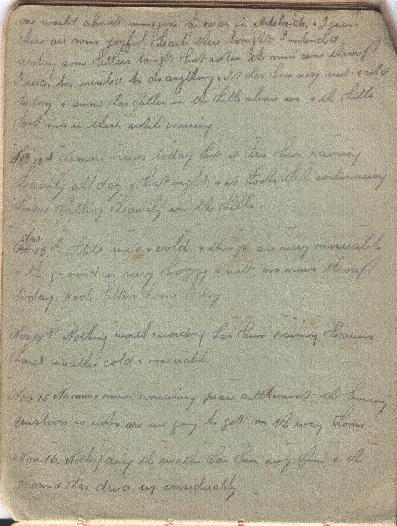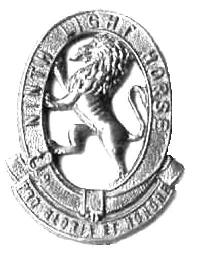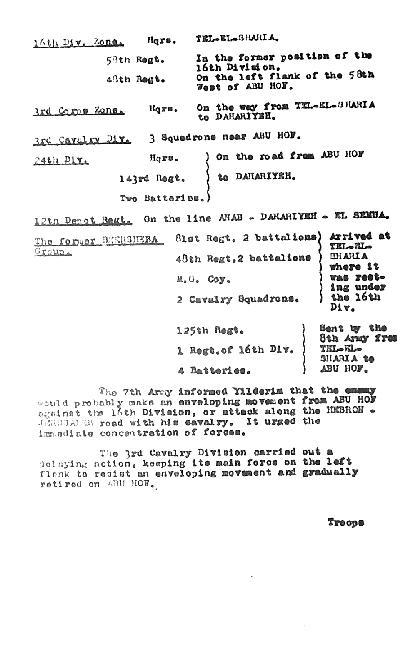Topic: AAB-Education Centre
Education Centre
The Australian Light Horse Studies Centre in conjunction with the various Education authorities in Australia, has embarked upon producing a program of instruction targeted initially towards the Later Adolescence band of scholars, characteristically those who are studying in Year 9 and 10 within Australia. Each lesson will be a self contained module. Some will be more difficult than others and graded accordingly.
Lesson 9 Keep the Home Fires Burning
Resource - Letters from 1914 to 1918
During the Great War, letters were the main method of keeping in touch with loved ones. The extent to which the Light Horsemen wrote home is exemplified by the statistics at the end of this post.
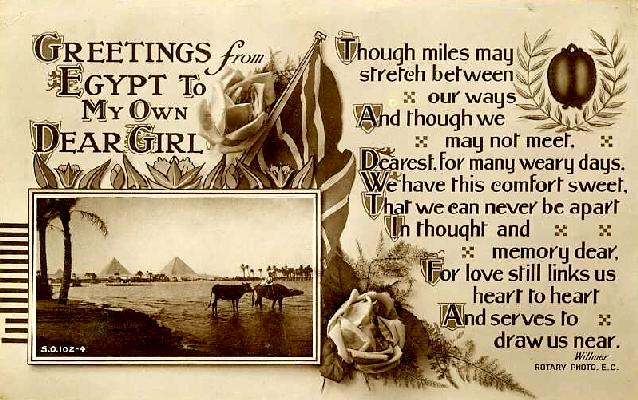
The Sands of Time ...
As the lives of the men who served and the families who served with them in Australia fades with the passing of those who knew them and the generations who felt the preservation of this material was important have also gone, the people featured in these letters have been abandoned by the current generation. Each letter was discarded by relatives who inherited them. These letters, 23 in all, have never been published before. By using them as a learning activity, the lives of these people will once again become meaningful to a new generation.
In presenting the letters, the names of the people have not been revealed. This is for two reasons. In some instances there are no names in the correspondence that can be matched. Other circumstances relate more to present day circumstances where the revelation can cause great embarrassment for the relatives. At times, a post script will be added to the letter indicating the fate of the author.
The letters reveal intimate details about their particular lives. The purpose of the letters is to reveal the common humanity we share with the generation of nearly a century ago. They express the same emotions in the same manner as we do. Everyone will recognise themselves in at least one of the letters. That is the beauty of this exercise - it puts us in touch with our past and yet it also feels like the present.
The letters are placed in a chronological order moving from 1914 to 1918. There will be a brief introduction to the letter so that it has some context within the lives of the people involved and allow understanding of the contents. Following that, the letter will then speak for itself. Finally, there are a few reflective question about the letter which the reader may wish to ponder finished by a post script.
Finally, each reader is urged to treat these letters with the greatest of respect as they are part of our common heritage.
1914
Letter 1 - Will and Margo
Mena Camp was the major training depot in Egypt for Australian troops. Named after a large building called Mena House, it was under the shadow of the famous Pyramids of Giza. It was a popular visit for all the troops. There were some 20 camel ride companies and a dozen photographers. The standard picture was of the serviceman astride a camel. This card was no exception.
Mena Camp
Cairo
Egypt
18 Dec 1914
Dear Margo
Our camp is quite close to the Pyramids in quite a good place. Will write a letter when I get time. Always looking out for a letter from you.
Love Will.
- What would Margo think when she received this post card?
- Since the day's work ended at about 6pm, why do you think Will didn't have time to write?
Letter 2 - Will and Lily
Will purchased a 1914 Christmas Card while in Egypt to express his feelings towards Lily, his sweetheart.
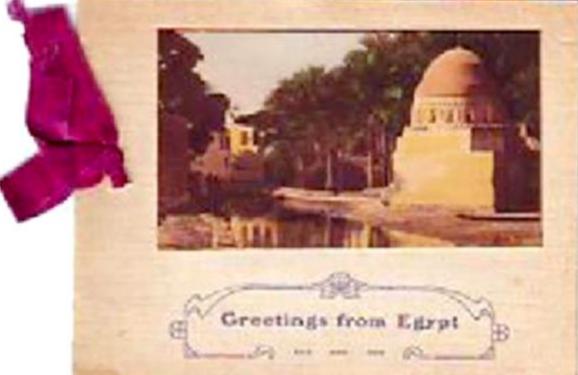
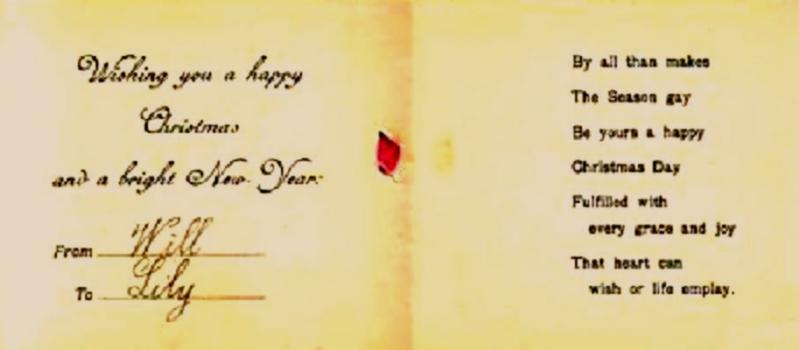
This was the message - although prewritten sentiments, the thoughts expressed in them were those that Will wished to express to Lily.
- What do you think Will's feelings were being away from family at Christmas time?
- How would Lily respond to this card?
Such a card was one of many thousands sent from Egypt to Australia in 1914.
As the years move on, the optimistic sentiments expressed in these two letters turned to greater reflection and a fatalistic acceptance that the seperation would be for a period much longer than anyone thought.
1915
Letter 3 - Arthur to his Mother
The letter from Arthur to his mother was written en route to Egypt. It was a quick note posted at Aden which was a coaling station and watering point for British ships. See Wikipedia - Aden.
21/1/15
Dear Mother
Just a line to let you know we have passed Aden. The natives are very good bargain hunters but come down in price if you barter with them. Well Mum, I think this is all the news so give my love to all. Art.
- What was Arthur's intention in sending this note?
- What would Arthur's mother felt when she received this note?
Arthur served continuously through the war and returned home to his mother.
Letter 4 - Dan and Ivy
An optimistic letter from a man who had not tasted the terror of war. In a few weeks Dan would be at Gallipoli. By the time Ivy received this letter and penned a response, Dan would have spent some twelve weeks at Gallipoli.
Dear Ivy,
I am sending you this Photo but you must not laugh too much at the little bit of black on my nose. Still we only had it taken for the fun of it, and they are not the best photographers out here. We had a great time at the Pyramids. I shall be glad when I receive a letter from you but I'm afraid we shall be at the front before one comes. But don't forget to write every week.
With best love from yours
Dan
xxxxxx
- Why does Dan seem excited by being in Egypt?
- How would Ivy feel about reading of Dan's adventures?
- What would she think about the prospect of going to the front?
Dan appears excited about the prospect of going to the front line, an optimism borne of naivity. The next letter would give an accurate idea as to his state of mind on the front line.
Letter 5 - Frank and Bessie
Frank appears to be a friend of the family as Bessie appears to be still at school and judging from the comments, she might still be an infant.
18/7/1915
Dear Bessie
Just a little note to let you know that I have not forgotten you yet. I often wish I was back to tease you again. How are you getting on at school. I suppose Jan will be a big girl when we get back. Well Ta Ta Bess.
From Frank
Have a kiss
xxxxxx
- Who would read this letter to Bessie?
- How would Bessie feel about receiving this letter?
- What do you think Frank's relationship is to Bessie?
Frank has some very fond memories of Bessie. His comments are filled with kindness towards a little girl. Judging by the awkward comments, it would appear as though Frank does not have any children of his own.
Letter 6 - Will and Isabella
Enteric Fever or Typhoid Fever was a dreadful illness which afflicted the men when placed in large concentrations with little ability for good hygiene practices. Enteric was the cause of a great many casualties at Gallipoli. The shortagesof hospital beds in Egypt meant that Malta quickly became a major hospital centre. This too overflowed and men were shipped to Britain. Will was part of that movement of men from Malta to Britain.
Malta
12 October 1915
Dear Isabella
Just a card to let you know that I am on the Hospital Ship "Assaye" which sails for England this afternoon, just recovering from Enteric Fever.
Regards to self + Madge.
Will
- What relationship do you think Isabella and Madge are to Will?
- In view of the news in this note, how would Isabella and Madge would respond?
Judging by the lack of introduction to the news about Enteric and the fact that he is also requesting Isabella to pass the news onto Madge, it does not appear that these women are very close to Will personally. Will tells his news in a very matter of fact manner which understates the dire nature of his illness. Enteric was often fatal. That he was being moved indicated that Will was recovering from the illness.
Letter 7 - Bill and Sister
Bill's sister, Catherine, was married and lived elsewhere in Victoria and so was not readily accessable. However, judging from this letter, a couple items shine through. Bill was not particularly close to his sister and so that distance became a problem. It would appear that after embarkation, Bill's parents passed on his sister's disappointment at not seeing him before departure. The opening sentence is one of a petulant brother who is responding to a "telling off" by his parents. It seems like a reluctant opening. But then familiarity seems to take over and the letter takes on a more characteristic sibling interchange.
At Sea
15-10-15
Dear Sis,
I was told to write, so I did . We are at Albany and doing well, we have had some rough weather and a lot of the boys have been sea sick, but I have not. We have to sleep in hammocks and get rocked to sleep of a night. I woul like to have said good-bye before I went, but I didn't seem to get a chance. Don't forget to drop me a line. I will write again soon so I will grow stout. With love to all.
Bill.
- How do you think Bill's sister felt at not being able to see him alive for the last time?
- Why was Bill and his sister so distant?
Bill never met his sister again - he was killed in action 29 July 1916, age 20. The death of a family member is always a dreadful event from which few ever recover. To never say good bye and express all those feelings to a family member before the death is a devastation. Guilt is another emotion that is felt strongly by the surviving family.
Letter 8 - Alwynne to his sister Lois
Alwynne saw extensive war service throughout the Middle East. After Gallipoli, he served in Palestine with the most memorable moment being as part of the 4th Light Horse Brigade which charged into history at Beersheba on 31 October 1917. Lois was married to Herbert whose brother Owen (or Lois and Alwynne's Brother in Law) was a dentist working with the Light Horse.
Gallipoli
21st Oct 1915
Your last letter dated Aug 29th 1915.
Dear Lois
Many thanks for your five letters which I received the day before yesterday, I also received one from you about ten day before that. I have received about a dozen letters during the last ten days all from you, Blangowrie and K. Consider I'm doing well and getting along nicely. Hope the two children are well, give them both a kiss for me. Suppose the boy can nearly crawl now. Owen is well in Egypt I think. When he comes over he will very likely be pretty near me. I saw him in Egypt several times. I think I told you or perhaps it was mother. Lover from your loving brother, Alwynne.
- What sort of relationship did Alwynne have with Lois?
- Can you guess the ages of that Lois's children?
- How do you think Lois would feel receiving this letter?
Alwynne returned to Australia in July 1919 and settled down as a grazier.
1916
Letter 9 - Walter to Nellie
While this letter is undated it is suspected to have been written sometime in March 1916. Walter was a driver with a Brigade Train although no embarkation record exists for him. At the time he wrote this letter he had not been allotted to a unit.
Heliopolis
Dear Nellie
A few words to let you know I have not forgotten you and hope you are keeping well. No further news about going to the front yet so I am having a good look around while I have the opportunity. Remember me to Mollie and best wishes to you both.
Yours sincerely
Walter
- What impression do you get about the state of mind of Walter when he wrote this letter?
- Who do you believe Mollie is?
- Do you think Nellie would keep up a relationship with Walter after receiving this letter?
Walter returned to Australia in May 1918 with a hernia. He was discharged as being medically unfit for military service.
Letter 10 - Charles to Marsh
Charles was part of the Supply Corps. Although he saw service with the 4th LHR, it was as a driver with the Regimental Train.
Heliopolis Camp
Egypt
Dear Marsh
Just a PC from an old pal letting you see I'm still as and enjoying life. Have been here nearly 4 months and expect to move to the firing line next week. But a few lines to above address will find me. Trusting you one as. Best wishes.
Regards to all
Charles
- Was it common for a male writing to a male friend to address him solely by the surname?
- In what sense is he using the term "as" in this letter?
Charles served his time with his unit and returned to Australia in 1919.
Letter 11 - Unknown Nurse to Unknown Recipient
While no woman served as a Light Horseman, women were an integral part of the AIF, usually designated to a nursing role. This letter is from a nurse who has nominated to remain in Egypt after the bulk of the AIF embarked for France. As to the author and recipient, nothing is known. There are no names or addresses on the card, just the note.
Intermediate Base Depot
Cairo
Egypt
The cake was lovely. Nearly all my men friends have gone away. I hate the thought of France. I nearly volunteered for Transport on the Meditterian for six months. I was a very good sailor coming over but it was on Beautiful ships and I thought it would be better to leave things to fate and wait till I am sent. A good many have volunteered but I want to keep my eye on the Australian boys.
- To whom do you think this letter is sent to?
- If the cake was lovely, what sort of cake would it have been to last such a long journey?
The comments in the letter lead to the conclusion that this nurse was far happier working in Egypt than going to England or France. While being stoic over her fate, her preference was to work with the Light Horsemen.
Letter 12 - Henry to his mother
This is an interesting letter because it is packed full of hinted but unstated history due to censorship of the letters. The unit Henry belonged to was going to a place called Wadi Muksheib which contained more than enough water to supply a Turkish attack. The aim was to drain the wadi and cisterns to deny the Turkish forces the ability to assemble at this place as they had done a year before. The fighting near by could relate to two events, they being: 1. The 9th LHR attack on Bir el Jifjafa on 13 April; or, 2. the Turkish attack at Qatia on 23 April.25/4/16
My Dear Mother
Just a few lines while I get the chance to write and I believe we are going out to stay for perhaps a week and may get a brush with the enemy. There was supposed to be some fighting again pretty close to where we are and we are most likely going out tomorrow. There is nothing much doing, but just enough to keep us awake. Love. Henry.
- What is Henry saying about being a soldier on the Front Lines?
- How would a mother respond knowing that her son is going into battle?
Henry played quite an active role during the war and was considered by his commanders to be an excellent bushman and was often chosen to escort senior officers through the front lines. He survived the war and returned to Australia where he lived until dying in the late 1980's.
Letter 13 - Charles and Ida
Charles is very much taken by his sweetheart Ida. Much of this letter appears to be a playful, tongue in cheek, letter. Despite his gentle teasing, he does want to pass a message to Ida regarding his ongoing relationship. Charles is broadly hinting that he wanted a firm commitment from Ida before he left Pontville Camp, just outside Hobart, where he was training, and embarked to the war.
Hobart
17/8/16
My dear little Sweetheart
I have been waiting, it seems like years, for an answer to my letter of a few months ago, but I have waited in vain so now intend to send you a gentle reminder. What have I done that you should treat me so harshly, may be darling there is some other fellow that has taken my place if there is the case be goood enough to write and let me know, then I will know that all is over between us and I may go to the war and get shot, you know darling I have lived for you and you alone can make me live. Think well dearest one before you answer my appeal (orange peel) for on your answer hangs life or death on the bettle field of France and you know darling I'm too young to die.
Second spasm
Well my deal little Ida, it really does seem like years since I was up at dear old Aps and I fair long to get up there for a day or two. I am going off this month, don't mean off the shelf, but off duty to get my eye see to, it is gradually getting worse. So may come up and have a look round with one eye.
How do you like the returned hero. Spose he will be right in the boom with the tarts. Miss Daisie is sure to have a few tickets on him.
I saw my old girlfriend Nina in Launceston. She came down to the train to see me, and you may guess it made this feel all over alike when I saw her, I would have gone for my life had I been able to, but I had to stand my ground, and she and another girl bowled up to the engine. She does not look half the girl she did when at Apsley.
Mrs Lisson and Nina came down another day and invited me out to tea. Of course Cliff said he would go but that's as far as he got, and she has gone home now broken hearted. I feel sorry for the poor girl.
Well Ida old girl, I must bring this to an end as it is getting late. Say, don't forget to drop a few lines to a fellow.
Give my best love to Mum, Jim, Mil and kisses.
Heaps of love for your little self.
I remain yours to a cinder.
Cliff.
- How would Ida feel getting this letter?
- Did this appeal by Cliff achieve its purpose?
- How would you go about making such an appeal?
Cliff survived the war to marry Ida. They lived in Tasmania for the rest of their lives.
Letter 14 - Geoff and Lindsay
The letter sent by Geoff to his brother Lindsay deals with his life in the Western Egyptian desert. The Senussi rebelled in Egypt when Italy entered the was a British ally. After the Italians took over the Turkish province of Libya in 1911, the Senussi were at war with them. To suppress the rebellion, Australian Light Horse units joined those from the Imperial Camel Corps to fight them. Geoff was a member of the Imperial Camel Corps.
5 October 1916
The last time I wrote was from Mersa Matruh, I am now hundreds of miles away among the sand dunes of upper Egypt. There is nothing here but clouds of flying sand and it is just awful at times. Water is scarce, as we are a good distance from the railway. We are advanced into the enemy's country so I am unable to name this place. We get up every morning at 4 o'clock and it is jolly cold. We have to keep a good guard on at nights and as we only have shorts and putties on we find it cold on our beats as we walk up and down inside the barb wire entanglements. For miles and miles there is nothing but sand dunes. I can tell you it was awful when we were all cooking for ourselves and the sand blowing into everything, we were eating half sand most of the time. We have no tents yet, when we wake in the mornings we have to dig the sand out of our ears and eyes for a few seconds before we can see anything. The Senussi will be driven further back until there will be no danger of them invading Egypt. The armed cars do fine work here, and I can assure you the Senussi are terrified when they see them coming. It is a wonderful sight to see the motor bicycle climbing the steep sand hills and one would think it impossible the work that they do.
Geoff
- Can you find the location of Mersa Matruh in Egypt?
- After the description of the sand problems after waking, can you feel the same sensations?
Geoff was killed in action on 11 April 1918 at a place called Musullubeh, near Jericho and the Jordan River.
For an account of this campaign, see:
The History of the Composite Australian Light Horse Regiment
Letter 15 - Alf to Ruby
Alf was a horse trainer who, while in Bundaberg enlisted in a Queensland based Light Horse Regiment where he rose to the rank of Warrant Officer Class II. Alf came from Adelaide. For many years he had been fond of Ruby, indeed since 1906, although he left Adelaide to ride and train horses around the east coast of Australia. Despite his travels he always kept a picture of Ruby in his bags. When Ruby found out that Alf was in the AIF, she sent him a letter. From there a correspondence was generated. This is one letter in that series.
Somewhere
Nov 26th
My Dearest Ruby
I have five minutes to spare while we are resting. We are on the march so thought I would send you a card and a couple of snaps that were taken here in the Desert. Excuse the scribble Ruby but I was thinking of you and thought I would write for old times sake. Trusting you are well.
I am still
Your boy
Alf
xxxxxx
- Why do you think Ruby decided to write to Alf after 10 years?
- What would Alf feel after suddenly, without warning, receive a letter from Ruby?
Alf came home from the war as a genuine hero being awarded the Distinguished Conduct Medal, a very high war decoration.
1917
Letter 16 - Dan writing to his uncle.
This letter appears to be one of a series. From the content, it would seem that Dan wrote a letter to an uncle - the brother of his father - which came to the uncle almost out of the blue as it was unexpected. Many men who were facing the trials of front line duty often wrote to anyone who might respond. In this case it was an uncle.
8/1/17
Dear Uncle
I just received your letter and was pleased to hear from you. I suppose you where surprised when you received my card not having heard from any of us for such a long time. Dad was always going to write but he put it off. This is a photo of my mates + I. I am sitting. It was taken when I was in England. I would like to have visited you but I will not let the opportunity pass next time if I get the chance. Hoping this finds you in the best of health as it leaves me at present. Dan.
- If you were the uncle, how would you respond to suddenly receiving this letter?
- In view of the response given to Dan, can you think of a reason for the separation of Dan's father and uncle for such a long period?
Dan never was able to carry out his promise to meet his uncle - he was Killed in Action, 8 August 1918.Perhaps the two brothers came into contact again after this letter.
Letter 17 - Jack to Marcella
This was a note on the back of a photograph of two men in AIF uniforms. There is no indication as to whom the men were apart from one having the name "Jack". Similarly there is no information about Marcella.
Jan 12 1917
Dear Marcella
I promised to send you a photo of the reinforcement to which I am attached but as none has been made available so far, I hope you will accept this as a substitute. I am here photographed with my pal Bert of Bellevue Hill. He is going away with me. Best wishes.
Yours sincerely
Jacky.
- Why would a photograph of Jack with his unit be important to Marcella?
- Do you think the substitute photograph would suffice?
- How would Marcella respond to this letter.
Sadly this letter gives the reader no more than is on this page. Someone cared enough to preserve the memory for many years until those who knew its story passed into history until lost on the shelves of a shop.
Letter 18 - Ted to his sister Nell
Ted's letter expresses one theme that is consistent in all letters, whether expressed or implied, that is the thought of getting home. Flag wagging is another term for semaphore, a system of signalling that relied upon the movement of flags.
EGYPT
May 3rd 1917
Dear Nell
Enclosed herewith please find a few negatives of photographs which I took at Cairo. I am sending then home as it is a nuisance carrying them about. Put that with the others I sent you some time ago.
I am going down to Zeitoun, to the Signal school on Sunder next, and from there expect to be going to Alexandria. I am looking forward to the trip and intend to put all my time into the flag wagging business.
To-day is the anniversary of my departure from Sydney. The time has passed very quickly - much more so than I expected. This time next year I hope to be home again.
Expecting a mail very soon, so will wait for your letter before writing again.
Best Love to all.
Your affectionate brother, Ted.
- Why did Ted need to carry his photographs and negatives with his kit?
- What does this letter say about Ted's relationship with his sister?
Ted spent most of his time in Egypt as a stores clerk or working in AIF Headquarters in Cairo. He returned to Australia in 1919.
Letter 19 - Bertie to his father, Bob
This is a touching letter from a son to his father. The final plea says much about the times and the impotence felt by the son in being with his father. Bob was wounded by shrapnel to his eye and lungs. He returned to the front at the end of the year.
28 June 1917
Dear Dad
Just a line hoping you are getting better. I am glad to hear that you are getting on orwright. No dought you can do with a rest and it will do you good. Hooping that your will take care of your self. It would be very nice that you would not have to go back in the trenches again for what you would be able to come home. You ort to sham sick like alot of them do and they might send you home again. Mum and all are well.
From your loving son,
Bertie
xxxxxxxxxxxxxxxxxxxxxxxxxxx
- How old do you think Bertie is?
- What sort of relationship does Bertie have with his father?
- Bob's wounds were traumatic so how would he have felt receiving this letter from his son Bertie?
Bob was sent to hospital with myalgia and debility a couple months into 1918, then sent home with rheumatism, debity, and premature senility. Bob was discharged from the AIF in June 1918 as being medically unfit for active service. Bertie had his plea answered.
Letter 20 - Cliff to Lily
Cliff was not a man to waste words. He sent many post cards but wrote very little on them except for terms of endearment to his sweetheart. Apart from "Darling girlie", he used "Darling sweetheart", and "My Darling loved one".
29. 8.17
Darling girlie
Am on the track again and having a few minutes to spare am dropping you a few lines trusting they find you well aurevoir
Cliff
- What do you think about Cliff's endearments?
- Have you any suggestions on what you would like to hear?
The expressions are very quaint which tells much about the character of the man. While we don't use these terms any more, we now have our own catalogues of favourite endearment terms.
Letter 21 - Doris to Mick
As the war dragged on and relatives wanted to express their thoughts about this separation, often a woman would obtain a picture of the man in her life and place an insert of her image in a cloud. The aim was to give the impression that the man was reflecting upon the woman in his life. This particular style of post card was very popular.
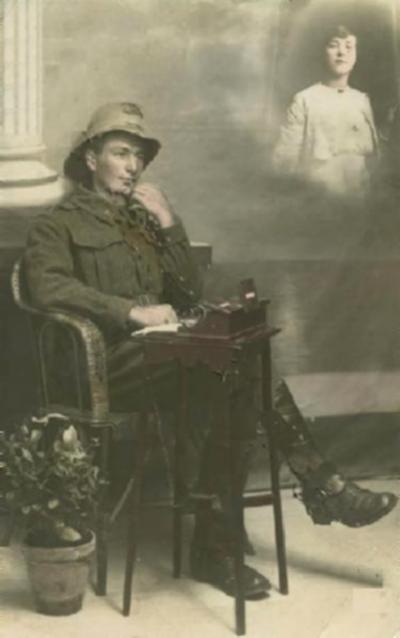
The picture is of Mick prior to departing from Melbourne in November 1915. It is a standard studio photograph taken by many photographers at the time. It is suspected that this picture was sent during the month of October 1917. As to Mick, he served in the AIF from August 1915 until he returned to Australia, May 1919.
- What was Doris thinking when she put together this card idea?
- How would Mick respond to recieving this card?
The particular card in this picture was a copy of the original sent by Mick to his neice Ruth after the war. This should indicate Mick's state of mind on receipt of the card.
Letter 22 - Unknown writer to his parents
The particular author was part of a concert party touring the various fronts to present entertainment to the Australian troops.
Dear Mum + Dad
Just received the parcel from Aunt Kitty. Have just written to her and sent photos to you, and one to Hilda of Floss + myself. I have not received any letters for some time. Of course I told you I had to pay 3d on each extra postage. We are not lucky enough to be resting in Blighty. Oh no, we are well in France and working hard day and night. We travel out every night about 8 or 9 miles. We leave tomorrow for a week’s season. I did not get that paper about Gray. I thought he was too much of a blower. PS Remember me to everybody.
- Who do you think Floss was?
- What sort of relationship do you think this man has with his family?
Concert parties were quite demanding of the men who worked on them. Moving the equipment from one location to another while keeping the show on every night was a strenuous task.
See: Entertainment for the troops - the movies
1918
Letter 23 - Annie and Bob
To assist people in expressing sentiments they found difficult to write, it was common for cards with patriotic themes to be available in the shops. Many women purchased these types of cards to send to their menfolk who were overseas.
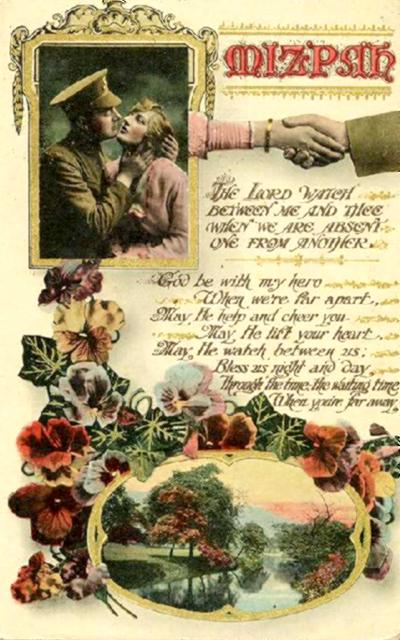
Mizpah
The Lord watch
Between me and thee
When we are absent
One from another
God be with my hero
When we're far apart
May he lift your heart
May he watch between us;
Bless us night and day
Through tim, the waiting time
When you're far away
Mizpah is an emotional bond between people who are separated (either physically or by death).
15/3/18
My Darling Bob,
I am sending you some nice cards for your birthday. There is one from all of us. They aren't as nice as I would have liked to send you but they were the best I could get here. I know darling your will think they are nice this card dear I think it is lovely it took my eye so I had to buy it to send you. I think the writing on it is beautiful don't you? And it is just what I think and pray dearest. It brings tears to my eyes when I read it. Well dear, accept our best love and wishes. Also give them to dear Pa.
Longing for you dearest.
I remain your ever loving wife
Annie
- After reading the Mizpah, did you think of someone in your life who was absent? Which parts do you think would have brought a tear to her eye.
- Annie seems to be unsure of her present to Bob. Why do you think this might be?
Annie and Bob were married in 1915. Along with his Father in Law (Pa in the letter), Bob enlisted in August 1916. Both Bob and Pa returned to Australia in 1919.
Final Note
The role of the Censor.
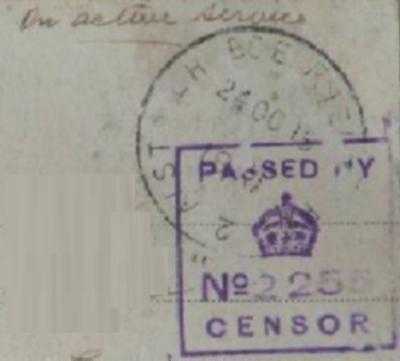
1st Light Horse Brigade and Censor's franking stamps, Gallipoli, 24 October 1915
All letters written by the soldiers were read by the unit censors prior to being despatched. Unless the letter bore the censor's stamp, it couldn't be posted. It was a tiresome job for the unit censor. Apart from reading all the mail, the censor had to report on the contents of the letters to the intelligence sections. The surveys of outbound letters allowed the commanders to understand the mood of their troops and the problems that really affected them in the field. Many times, a good commander would utilise the results of these censor reports to effect welcome changes in the conduct of the unit before the problem became a discipline issue.
Postal Statistics
The Australian Military Post Office servicing the Light Horse was comprised of one officer and 57 men. On a weekly basis, the Australian forces in the Light Horse received 632 Letter bags and 1,339 Parcel bags making a total of 1,971 bags of mail. Similarly, the Light Horsemen and their supports sent about 42,000 letters to Australia every week. Over the whole period of the Middle East campaign through the Sinai, Palestine and Syria, Australian Light Horsemen and their support staffsent some three million letters to Australia.
[From: Rachwalsky, E & Harrison, DF, "The postal history and postmarks of the Egyptian Expeditionary Force (E.E.F.) with special reference to Palestine", BAPIP Bulletin, No. 30, 1958, p. 7.]
Additional References:
Post Office
Maps
Locations
History
The History of the Composite Australian Light Horse Regiment
Citation: Letters from 1914 to 1918






